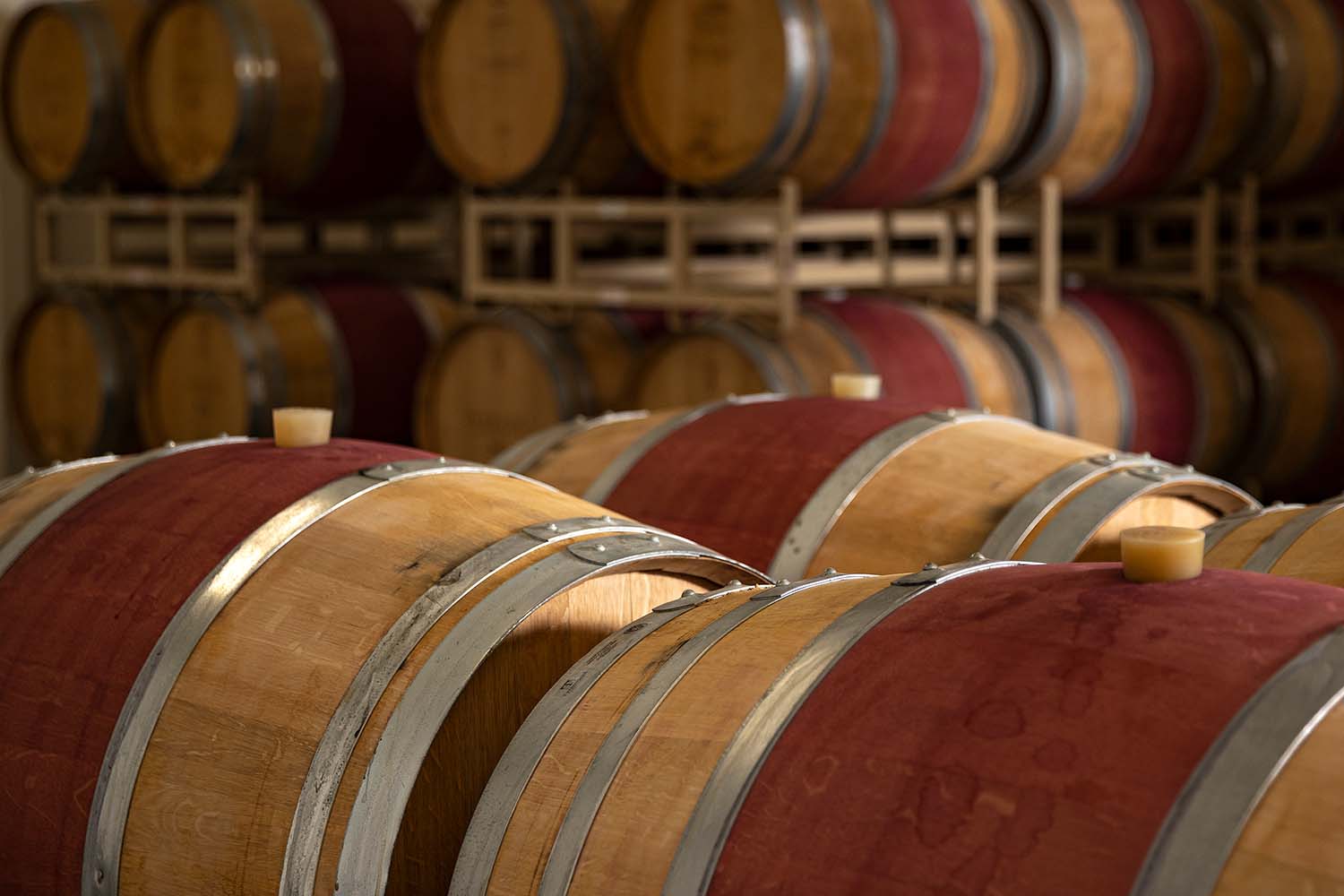This year, we are bringing back an old tradition in the Frank Family cellar: the process of staining wine barrels. This labor-intensive practice involves painting the bilge (or belly) of the barrel with a red wine-based pigment. Although the origins of barrel staining are not well documented, it is believed to have begun by the monks of Burgundy, France.

The significance of this practice has also long been questioned and the answer is simply for aesthetics. A beautiful red stripe is painted around the position of the bunghole (a hole drilled into the stave used for filling and emptying the barrel). The red stripe conceals the inevitable wine runoff when barrels are topped off (or refilled) after evaporation has occurred. In short, stained barrels look stunning in the cellar.

Done entirely by hand, the Frank Family cellar team racks the wine from the barrels, leaving behind dead yeast, also known as lees. The lees are then used to provide the natural red coloration to the stain which is absorbed by the wood of the French oak when applied with a sponge. Once the stain is set after two or three coats, the wine is siphoned back into the painted barrels and stacked in our cellar for continued aging.

While some wineries have historically stained their barrels to indicate red vs. white wine, at Frank Family the red stripe is also used to designate the wine from our beloved Winston Hill Vineyard which makes up our Patriarch Cabernet Sauvignon and Winston Hill Bordeaux Blend. This extra touch is just another way we continue to set a higher standard for our wines.











